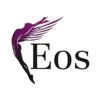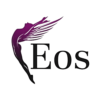Table of Contents
ToggleIn today’s fast-paced digital landscape, employees are increasingly exposed to technology, leading to a phenomenon known as digital fatigue. This condition manifests as physical and mental exhaustion resulting from excessive interaction with digital tools, screens, and information overload. For business leaders and HR practitioners, ecognising the signs and implications of digital fatigue is crucial for maintaining a productive and engaged workforce.
What is Digital Fatigue?
Digital fatigue occurs when individuals experience cognitive saturation due to the constant barrage of information and demands from digital devices. This can lead to a range of symptoms, including:
- Decreased Concentration: Employees may struggle to focus on tasks, leading to reduced productivity.
- Increased Irritability: Overwhelmed workers may become more prone to frustration and conflict with colleagues.
- Sleep Problems: Excessive screen time, especially before bed, can disrupt sleep patterns, further exacerbating fatigue.
- Burnout: Prolonged exposure to digital fatigue can result in burnout, characterised by emotional exhaustion and a sense of detachment from work. According to a report by the World Health Organization (WHO), burnout is now recognized as an occupational phenomenon. The constant need to be “on” and responsive in a digital work environment can prevent employees from disconnecting and recharging, leading to burnout over time. [1]
- Negative Impact on Mental Health: The American Psychological Association (APA) has highlighted the mental health implications of digital fatigue. The APA’s research indicates that prolonged exposure to digital screens can lead to increased anxiety, depression, and a sense of isolation among workers. The lack of face-to-face interaction and the pressure to be constantly available online contribute to these feelings of stress and mental fatigue. [2]
Research indicates that digital fatigue can significantly impact organisational performance. According to a study published by Henley Business School, digital fatigue can lead to decreased productivity and higher turnover rates, as employees who feel overwhelmed are more likely to seek opportunities elsewhere. [3] Furthermore, the constant switching between applications—averaging 30 times a day—can reduce productivity by as much as 45%. [4]
Read more: Preventing Employee Burnout: Strategies for a Healthy Workplace
The Hidden Costs of Digital Fatigue
The implications of digital fatigue extend beyond individual employees. For organisations, the costs can be substantial:
- Reduced Productivity: As employees struggle to concentrate, overall productivity declines, affecting project timelines and business outcomes.
- Higher Turnover Rates: Organizations may face increased turnover as employees seek healthier work environments, leading to recruitment and training costs.
- Decreased Employee Engagement: A fatigued workforce is less likely to be engaged and motivated, which can stifle innovation and creativity.
Strategies to Combat Digital Fatigue
To address digital fatigue, organisations can implement several strategies:
- Streamline Digital Tools: Reducing the number of applications employees need to use can minimise the cognitive load. For example, adopting integrated platforms like Microsoft 365 can centralise communication and collaboration, reducing the need for constant switching between tools. [5]
- Encourage Breaks: Promoting regular breaks away from screens can help employees recharge and improve focus. Simple practices like the Pomodoro Technique, which encourages short breaks after focused work sessions, can be beneficial. [6]
- Foster Meaningful Connections: Building a culture that emphasises meaningful employee connections can help mitigate feelings of isolation and overwhelm. Encouraging team-building activities and open communication can enhance workplace relationships.
- Provide Training and Support: Offering training on effective digital tool usage and time management can empower employees to work more efficiently and reduce stress.
- Limit Non-Essential Meetings: Reevaluate the necessity of meetings and encourage a culture where meetings are only scheduled when absolutely necessary. Use asynchronous communication methods, such as shared documents or project management tools, to reduce the need for constant video calls.
- Implement Digital Detox Policies: Encourage employees to disconnect from work-related digital devices during non-working hours. This could include implementing policies that discourage after-hours emails or promoting “device-free” hours during the workday.
- Provide Mental Health Support: Offer resources and support for mental health, such as access to counseling services, mental health days, or wellness programs. Creating a culture where mental health is prioritized can help employees feel supported and reduce the impact of digital fatigue.
- Foster a Flexible Work Environment: Allow employees to tailor their work schedules to their needs. Flexibility in work hours and the option to work remotely can help employees manage their digital workload more effectively and reduce the risk of burnout.
Conclusion
Digital fatigue is a growing concern in the modern workplace, with significant implications for employee well-being and organisational performance. By recognising the signs of digital fatigue and implementing strategies to combat it, business leaders can foster a healthier work environment that promotes productivity and engagement.
If your organisation is struggling with the challenges of digital fatigue and needs support in managing your workforce, consider our Employer of Record (EOR) services. We specialise in helping businesses streamline their HR processes, ensuring compliance and efficiency while allowing you to focus on your core operations. Contact us today to learn how we can assist you in creating a more balanced and productive work environment. Check our services here or book a free consultation now.
References:
[2] American Psychological Association: APA Stress in America 2020
[3] https://www.henley.ac.uk/news/2023/how-to-fight-digital-fatigue-at-work
[4] https://www.tourwriter.com/technology-fatigue/
[5] https://www.knowmore365.com/en/le-blog/digital-fatigue-causes-impacts-and-solutions/







